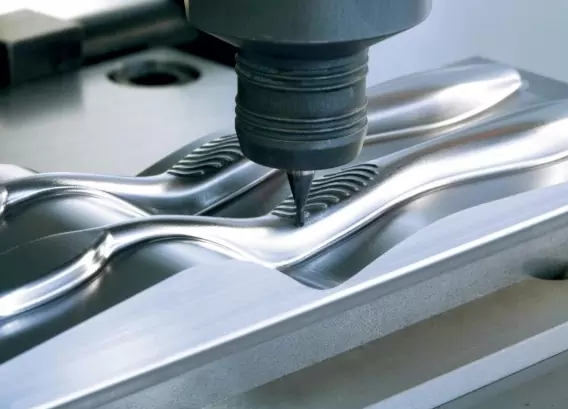Surface speed is defined as the speed at which the cutter tool moves across a workpiece. It is used to help determine the optimal spindle rpm (Revolutions per minute) for machining cuts on both lathes and mills. It has a relationship with tool life and generally help machinists to manage the life span of their tool and the speed at which operations should be run.
If you want to improve your CNC machining skills, it is important to have a fair understanding of how surface speeds (SFM) and feed rates (RPM) work. It will help you optimize your machine performance, tool life and general surface finish quality on all your workpieces.
Relationship between Surface speed and CNC tool life
There is a direct correlation between the SFM rates and the life span of your CNC tool. Generally, using very high SFM makes work faster, but will come at the expense of your tool life. This is because faster movement of tools across the workpiece surface will result in heating of the tool. When your tool gets too hot and temperatures heighten, the cutting tool will begin to soften, causing it edges to dull. A cutting tool with a dull edge will also result in even more friction, and ultimately ruin the tool.
On the other hand, when your surface speed is too slow or too little, the feed rate drops and results in rubbing. Once the tool velocity is insufficient., the tool will also begin to get too hot and impact the tool life. Ultimately, slower surface speeds are more beneficial to tool life and performance than higher speeds as there will be reduced amount of heat in the cuts.

As shown in the graph above, the best input for tool life consists of a combination of mid or average feed rates at lower RPMs. You will want to avoid high feed rates and low spindle speed. Doing so will force the flutes in your CNC tool to cut off too much material, heat accumulation, unwanted vibration and ultimately, a broken tool.
Similarly, if you input at a higher spindle speed (RPM) relative to the feed rate, rubbing can, and will occur, making the tool to overheat and soften rather than cutting nice chips. The effect of this is a tool with full edges, low cutting efficiency and sub-par surface finish on your workpiece.
Choosing the right SFM and RPM Rates
To find the balance, use the appropriate SFM and RPM rates that match to the material workpiece you are cutting. This can be achieved in two ways – first, through the use of a feed and speed calculator like the G-wizard, and secondly, through a use of a simple machining formula.
• For the feed and speed calculator (G-wizard)
Simply choose the tool and material and receive suggestions on the recommended RPM and Surface speed.
• Machining formula
Depending on which parameter you have, you can use the RPM to get the SFM and vice versa. The simple machining formula to be used is:
RPM of Spindle = Surface speed / Circumference of workpiece.

FirstPart CNC Machining in China
FirstPart is one of China’s leading manufacturing hub for Additive, CNC and Conventional manufacturing techniques. We boast of excellent in-house capacity, labor force and logistics while delivering exceptional value for money.
Our array of services includes CNC machining, CNC turning, CNC milling, 3D printing, Rapid Tooling, Die casting, Rapid prototyping, Plastic Injection Molding, Urethane Casting, Aluminum Extrusion, Post-machining/Finishing services and much more.
We offer product tooling, mass production, bridge tooling and low-volume prototyping/manufacturing with very flexible minimum order quantities (1 to 100,000). Our services are online, scalable and innovative, with a team of engineers and design experts available to support you through your entire product development cycle.










